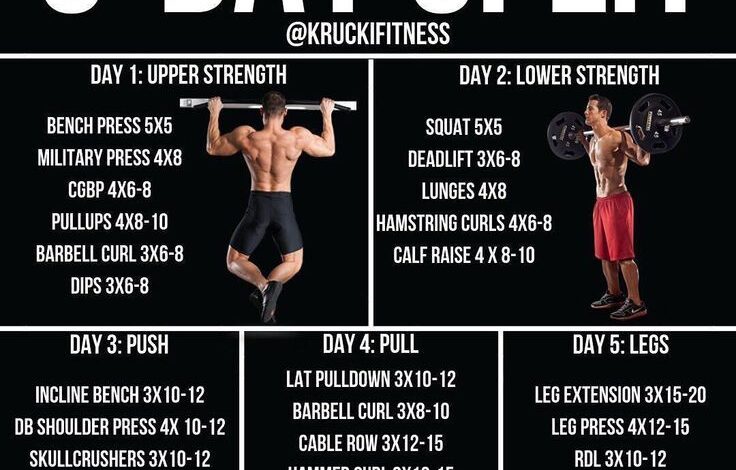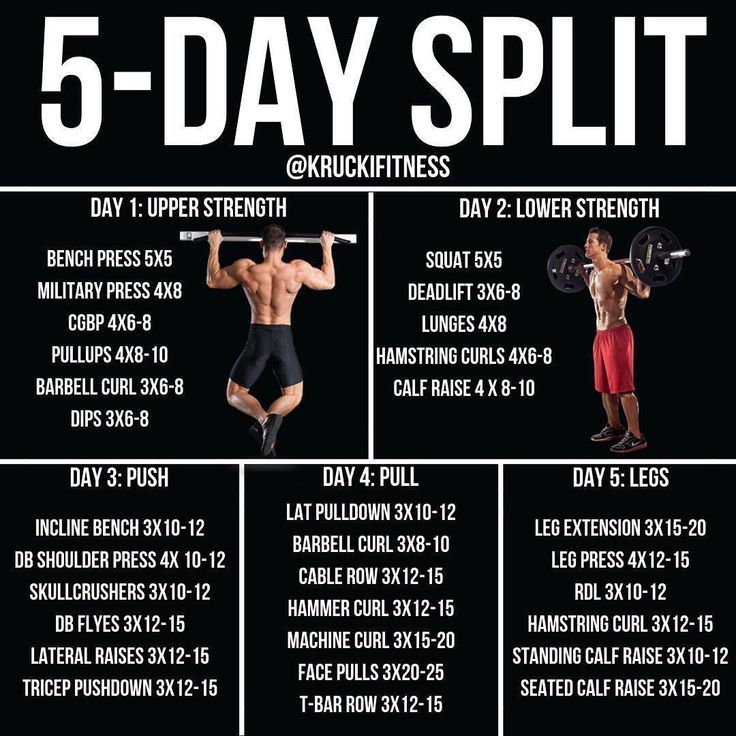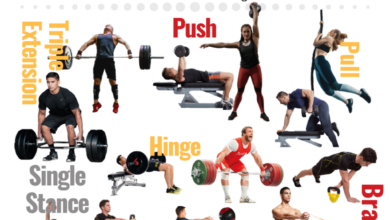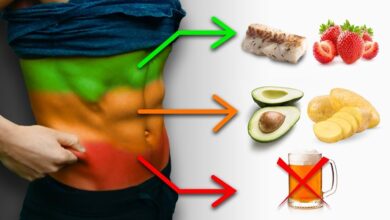
5 Day Core Workout Guide: Strengthen Your Foundation
Ready to unlock a stronger, more stable you? Our 5 Day Core Workout Guide is your roadmap to building a powerful core that benefits your entire body. This guide isn’t just about sculpted abs; it’s about enhancing your overall fitness, reducing injury risk, and improving your daily life.
From beginner-friendly exercises to advanced progressions, we’ll guide you through a balanced routine that strengthens your core muscles, leaving you feeling confident and energized.
This 5-day plan focuses on a diverse range of exercises that target all the major core muscles – your abs, obliques, lower back, and pelvic floor. We’ll provide detailed descriptions of each exercise, including proper form and technique, along with modifications for different fitness levels.
You’ll also learn about essential warm-up and cool-down routines, nutrition tips for optimal core strength development, and the importance of rest and recovery.
Introduction
A strong core is the foundation of a healthy and functional body. It’s not just about aesthetics; a strong core improves your overall fitness and well-being in numerous ways. This 5-day core workout routine is designed to help you build a powerful core, enhancing your strength, stability, and overall athletic performance.
Workout Structure and Target Areas
This routine focuses on engaging all major core muscle groups, including:
- Abdominal Muscles:These include the rectus abdominis (six-pack), obliques (side abs), and transverse abdominis (deep core muscle).
- Back Muscles:This includes the erector spinae, which runs along the spine, and the latissimus dorsi, which is responsible for pulling movements.
- Glutes:The gluteus maximus, medius, and minimus are important for hip extension, rotation, and stability.
The workout is structured to provide a balanced approach, incorporating various exercises that target these muscle groups from different angles.
Workout Structure
This workout guide is designed to help you build a strong core. The workouts are structured to progressively challenge your core muscles, ensuring you see consistent results.
A strong core is essential for weight loss, as it helps you maintain good posture, improves balance, and boosts your metabolism. This 5 day core workout guide will help you build a strong foundation, but remember that consistency is key.
For a holistic approach, check out your 7 day guide to forming better habits for weight loss , which delves into healthy eating habits and other lifestyle changes. Combine these strategies with your core workout routine, and you’ll be well on your way to achieving your weight loss goals.
This 5-day core workout guide is designed for all fitness levels. You can adjust the number of sets and reps based on your fitness level. If you are new to exercise, start with 2 sets of 10 reps for each exercise.
As you get stronger, you can increase the number of sets and reps. It is important to listen to your body and take rest days when needed.
Workout Schedule
The following table Artikels the workout schedule for each day of the week. Each day focuses on a specific area of the core, allowing for targeted muscle development.
| Day | Exercise | Sets | Reps |
|---|---|---|---|
| Monday | Plank | 3 | 30 seconds |
| Monday | Crunches | 3 | 15 |
| Monday | Leg Raises | 3 | 15 |
| Tuesday | Russian Twists | 3 | 15 each side |
| Tuesday | Side Plank | 3 | 30 seconds each side |
| Tuesday | Bicycle Crunches | 3 | 15 |
| Wednesday | Rest Day | ||
| Thursday | Reverse Crunches | 3 | 15 |
| Thursday | Mountain Climbers | 3 | 30 seconds |
| Thursday | Dead Bugs | 3 | 15 each side |
| Friday | Flutter Kicks | 3 | 30 seconds |
| Friday | Superman Plank | 3 | 30 seconds |
| Friday | V-Ups | 3 | 15 |
| Saturday | Rest Day | ||
| Sunday | Rest Day |
Core Exercises

Your core is the foundation of your entire body, providing stability and strength for all movements. By targeting your core muscles, you improve your posture, reduce the risk of injury, and enhance your overall fitness. This workout guide will provide you with a comprehensive understanding of effective core exercises, ensuring you achieve your fitness goals.
Core Exercise Variations, 5 day core workout guide
Core exercises can be modified to suit different fitness levels. Beginners can start with easier variations, while more advanced individuals can challenge themselves with more complex movements.
- Plank:
- Beginner:Start with a forearm plank, holding the position for 15-30 seconds. Gradually increase the hold time as you get stronger.
- Intermediate:Transition to a full plank, holding the position for 30-60 seconds. Incorporate variations like knee-to-elbow touches or side planks.
- Advanced:Explore advanced variations such as plank jacks, plank shoulder taps, or plank hip dips.
- Crunches:
- Beginner:Begin with basic crunches, focusing on proper form and engaging your core muscles. Start with 10-15 repetitions.
- Intermediate:Incorporate variations like reverse crunches, bicycle crunches, or Russian twists. Increase the repetitions to 15-20.
- Advanced:Challenge yourself with weighted crunches, decline crunches, or advanced variations like knee-to-chest crunches.
- Bird Dog:
- Beginner:Start with a modified version, focusing on maintaining a stable core while extending the opposite arm and leg. Perform 10-15 repetitions on each side.
- Intermediate:Perform the standard bird dog, extending the opposite arm and leg simultaneously. Increase the repetitions to 15-20 on each side.
- Advanced:Incorporate variations like adding a resistance band or holding a weight in the extended hand. Perform 20-25 repetitions on each side.
Warm-up and Cool-down: 5 Day Core Workout Guide
Preparing your body for exercise and allowing it to recover afterward is crucial for maximizing results and preventing injuries. Incorporating a dynamic warm-up before each workout and a static stretching cool-down after is essential.
Dynamic Warm-up
A dynamic warm-up gradually increases your heart rate and prepares your muscles for the demands of the workout. It involves controlled movements that mimic the exercises you’ll be performing. Here’s a sample dynamic warm-up routine for each workout:
- Arm circles: 10-15 repetitions in each direction.
- Leg swings: 10-15 repetitions in each direction.
- High knees: 30 seconds.
- Butt kicks: 30 seconds.
- Arm circles: 10-15 repetitions in each direction.
- Leg swings: 10-15 repetitions in each direction.
- High knees: 30 seconds.
- Butt kicks: 30 seconds.
Static Stretching Cool-down
Static stretching involves holding a stretch for an extended period, typically 15-30 seconds. It helps to improve flexibility and range of motion, promoting muscle recovery and preventing post-workout stiffness.Here’s a sample static stretching cool-down sequence:
- Quadriceps stretch: Stand with your feet together and gently pull your heel toward your buttocks. Hold for 30 seconds.
- Hamstring stretch: Sit on the floor with your legs extended. Reach toward your toes, keeping your back straight. Hold for 30 seconds.
- Calf stretch: Stand facing a wall with your feet shoulder-width apart. Step back with one foot and lean forward, keeping your heel on the ground. Hold for 30 seconds.
- Chest stretch: Interlace your fingers behind your back and extend your arms upward. Hold for 30 seconds.
- Shoulder stretch: Reach your right arm across your body and gently pull it with your left hand. Hold for 30 seconds. Repeat on the other side.
- Triceps stretch: Reach your right arm over your head and bend your elbow, bringing your hand down toward your back. Use your left hand to pull your elbow closer to your head. Hold for 30 seconds. Repeat on the other side.
- Hip flexor stretch: Kneel on one knee and step forward with the other leg. Lean forward, keeping your back straight. Hold for 30 seconds.
- Piriformis stretch: Lie on your back with your knees bent and your feet flat on the floor. Cross your right leg over your left thigh and gently pull your right knee toward your chest. Hold for 30 seconds.
Importance of Warm-up and Cool-down
Warm-up and cool-down routines play a crucial role in preventing injuries and enhancing performance.
“A proper warm-up increases blood flow to the muscles, preparing them for activity and reducing the risk of muscle strains or tears.”
“A cool-down helps to prevent muscle soreness and stiffness by gradually decreasing your heart rate and allowing your muscles to relax.”
Nutrition and Recovery
Fueling your body with the right nutrients is crucial for building and maintaining core strength. A balanced diet, coupled with proper rest and recovery, will optimize your results and prevent injuries.
Importance of Nutrition for Core Strength
A well-balanced diet provides your body with the necessary energy and building blocks for muscle growth and repair. Here’s what to focus on:
- Protein:Essential for muscle repair and growth. Aim for 0.8 grams of protein per kilogram of body weight daily. Good sources include lean meats, poultry, fish, eggs, dairy products, beans, and lentils.
- Carbohydrates:Provide energy for your workouts. Choose complex carbohydrates like whole grains, fruits, and vegetables over refined sugars.
- Healthy Fats:Important for hormone production and cell function. Include sources like avocados, nuts, seeds, and olive oil.
- Hydration:Water is essential for muscle function and overall health. Aim for at least 8 glasses of water per day.
Importance of Rest and Recovery for Muscle Growth
Rest and recovery are as crucial as exercise for building core strength. During rest, your muscles repair and rebuild themselves, becoming stronger and more resilient.
A strong core is essential for any fitness journey, and my 5-day core workout guide will help you build that foundation. But remember, fueling your body with the right nutrients is just as important as the workouts themselves. Check out this amazing resource on diets and recipes for meal worthy salads to find healthy and delicious meal options that will keep you energized for your core workouts.
- Adequate Sleep:Aim for 7-9 hours of quality sleep each night to allow your body to recover and rebuild muscle tissue.
- Active Recovery:Light activities like walking, stretching, or yoga can aid recovery by improving blood flow and reducing muscle soreness.
- Listen to Your Body:Don’t push yourself too hard. If you’re feeling sore or fatigued, take a rest day or modify your workout intensity.
Supplements to Support Core Strength
While a healthy diet is the foundation for core strength, certain supplements can provide additional support.
- Creatine:A naturally occurring compound that helps increase muscle mass and strength. Studies have shown that creatine supplementation can enhance core strength and power output.
- Protein Powder:A convenient way to increase protein intake, especially if you struggle to meet your daily requirements through food alone.
- Glutamine:An amino acid that supports muscle recovery and reduces muscle soreness. It can be beneficial for those engaging in intense core workouts.
Modifications and Progression
This section will explore how to adjust this 5-day core workout plan to suit different fitness levels, as well as strategies for increasing intensity and progressing to more challenging exercises. Whether you’re a beginner looking to build a solid foundation or an experienced exerciser seeking to push your limits, there are ways to tailor this plan to your individual needs.
Modifications for Beginners
Beginners can modify the exercises to make them easier and more manageable.
A strong core is essential for everyday activities and can make a big difference in your workouts. This 5-day core workout guide will help you build a powerful foundation. Remember, though, that fueling your body right is just as important as the exercises themselves.
To make sure you’re getting the most out of your workouts, check out these strategies for eating in moderation to ensure your body has the energy it needs to recover and grow. With a balanced approach to both exercise and nutrition, you’ll see incredible results in your core strength and overall fitness.
- Reduce repetitions:Start with fewer repetitions per set, such as 8-10 instead of 12-15. As you gain strength, you can gradually increase the repetitions.
- Modify exercises:For example, instead of a full plank, try a plank on your forearms with your knees on the ground. This reduces the pressure on your core muscles.
- Use a chair for support:When performing exercises like Russian twists, you can use a chair to help maintain balance and stability. This reduces the need to engage your core as much, making the exercise easier.
Modifications for Advanced Fitness Levels
Advanced exercisers can increase the intensity and challenge of the exercises to further strengthen their core.
- Increase repetitions:As you progress, increase the number of repetitions per set to 15-20 or more. This will help to build more muscle and endurance.
- Add weight:Use dumbbells or resistance bands to increase the challenge of exercises like crunches, Russian twists, and side planks.
- Increase time under tension:Hold each exercise for a longer duration, such as 30-60 seconds, to further engage your core muscles.
Progression Plan
This progression plan Artikels a structured approach to advancing your core strength and stability:
- Focus on form:Before increasing intensity, prioritize proper form. Mastering the basic exercises with good technique is essential for preventing injuries and maximizing results.
- Increase repetitions:Once you’ve mastered the basic exercises with good form, gradually increase the number of repetitions per set. This will help to build endurance and strength.
- Add resistance:Incorporate weights or resistance bands to challenge your core muscles further. Start with light weights and gradually increase the resistance as you get stronger.
- Increase time under tension:Hold each exercise for a longer duration to further engage your core muscles. This can be achieved by holding a plank for longer or slowing down the tempo of other exercises.
- Try advanced variations:As you progress, explore more challenging variations of the core exercises, such as single-leg planks, anti-rotation presses, and weighted side planks. These exercises target multiple muscle groups and increase the demand on your core.
Safety and Precautions
It’s crucial to approach any workout routine with safety in mind, especially when targeting your core. Understanding potential risks and implementing proper techniques can prevent injuries and maximize your workout benefits.
While core exercises are generally safe, common mistakes can lead to strains, sprains, or other issues. It’s essential to prioritize form over weight or repetitions. Always listen to your body, and if you feel any pain, stop immediately.
Common Mistakes and Potential Injuries
Failing to maintain proper form during core exercises can lead to various injuries. It’s important to understand these common mistakes and take preventive measures to avoid them.
- Overextension:Excessively arching your back during exercises like planks or crunches can strain your spine and lead to lower back pain.
- Holding your breath:Holding your breath during intense exercises can increase blood pressure and strain your cardiovascular system. It’s crucial to breathe deeply and rhythmically throughout your workout.
- Ignoring your body:Pushing yourself too hard or ignoring pain signals can lead to injuries. Always listen to your body and stop if you feel any discomfort.
- Using improper form:Using improper form can put undue stress on your joints and muscles, leading to injuries. Ensure you understand the correct technique for each exercise before attempting it.
- Ignoring your core muscles:Focusing solely on the external muscles and neglecting the deeper core muscles can lead to imbalances and increase the risk of injury.
Safety Tips for Performing Core Exercises
Following these safety tips can significantly reduce the risk of injuries and enhance your workout experience.
- Warm up properly:Prepare your muscles for the workout by engaging in light cardio and dynamic stretches for 5-10 minutes. This helps increase blood flow and flexibility, reducing the risk of muscle strains.
- Focus on proper form:Prioritize proper form over weight or repetitions. Engage your core muscles, maintain a neutral spine, and avoid overextending or arching your back.
- Listen to your body:Pay attention to your body’s signals. If you feel any pain, stop the exercise immediately. Rest and allow your body to recover before continuing.
- Use proper equipment:Use appropriate equipment, such as a mat or stability ball, to provide support and minimize the risk of injuries.
- Gradually increase intensity:Don’t jump into advanced exercises right away. Start with beginner-friendly variations and gradually increase the intensity as your core strength improves.
- Consult a professional:If you have any underlying health conditions or concerns, consult a qualified healthcare professional or certified personal trainer before starting any new workout program.
Importance of Listening to Your Body and Avoiding Overtraining
Your body is your best guide. Paying attention to its signals is crucial for preventing injuries and maximizing your workout benefits. Overtraining can lead to fatigue, muscle soreness, and even injuries. It’s essential to rest and allow your body to recover between workouts.
- Rest days are crucial:Incorporate rest days into your workout schedule to allow your muscles to recover and rebuild. Aim for at least one or two rest days per week.
- Listen to your body:If you feel pain, stop the exercise immediately. Don’t push yourself beyond your limits.
- Prioritize sleep:Sleep is essential for muscle recovery and overall health. Aim for 7-9 hours of quality sleep each night.
- Don’t neglect nutrition:Proper nutrition provides your body with the necessary nutrients for recovery and muscle growth. Focus on consuming a balanced diet rich in protein, carbohydrates, and healthy fats.
Final Conclusion
Building a strong core is an investment in your overall health and well-being. With this 5-day guide, you’ll gain the knowledge and tools to transform your core strength, unlock new fitness potential, and enjoy a healthier, more active lifestyle.
So, get ready to challenge yourself, feel the burn, and reap the incredible benefits of a strong core. Let’s get started!






